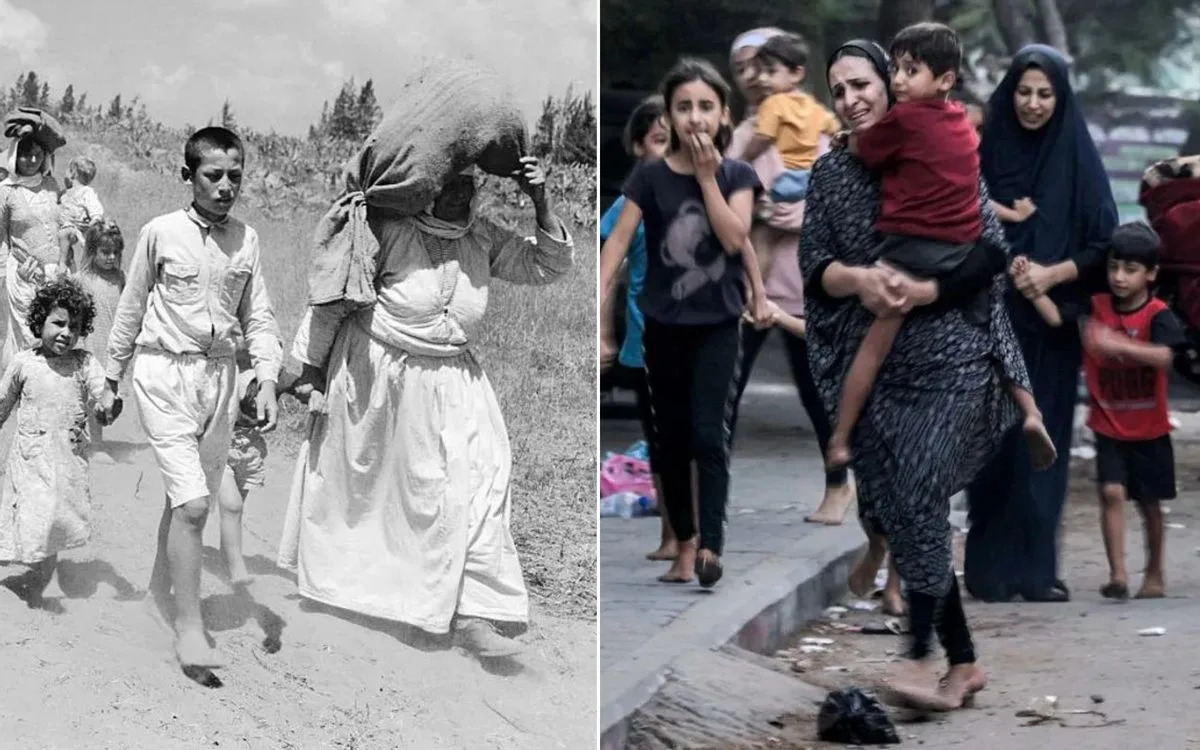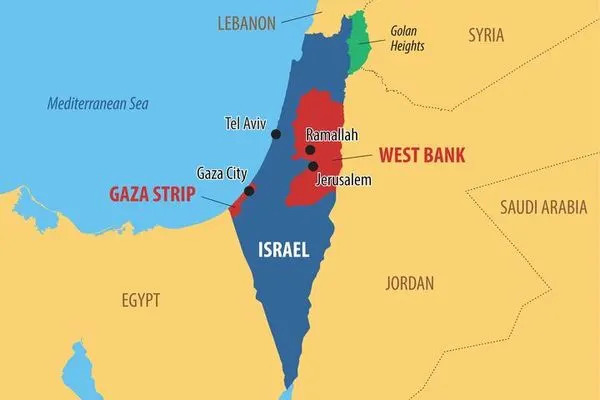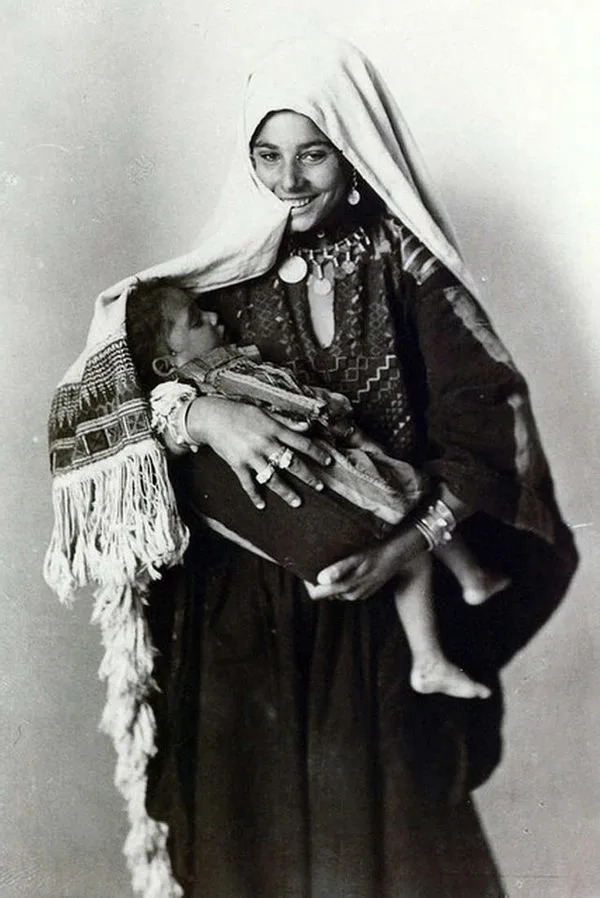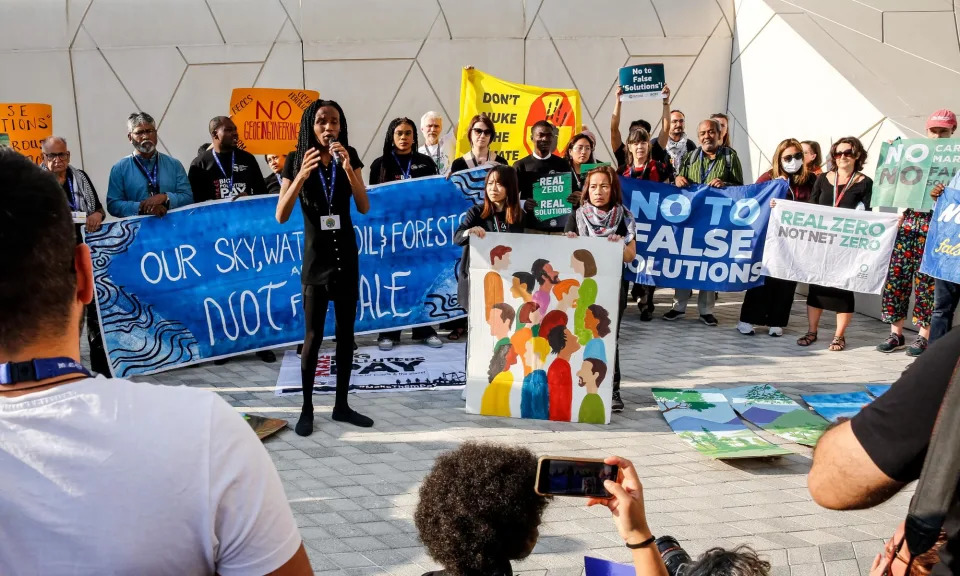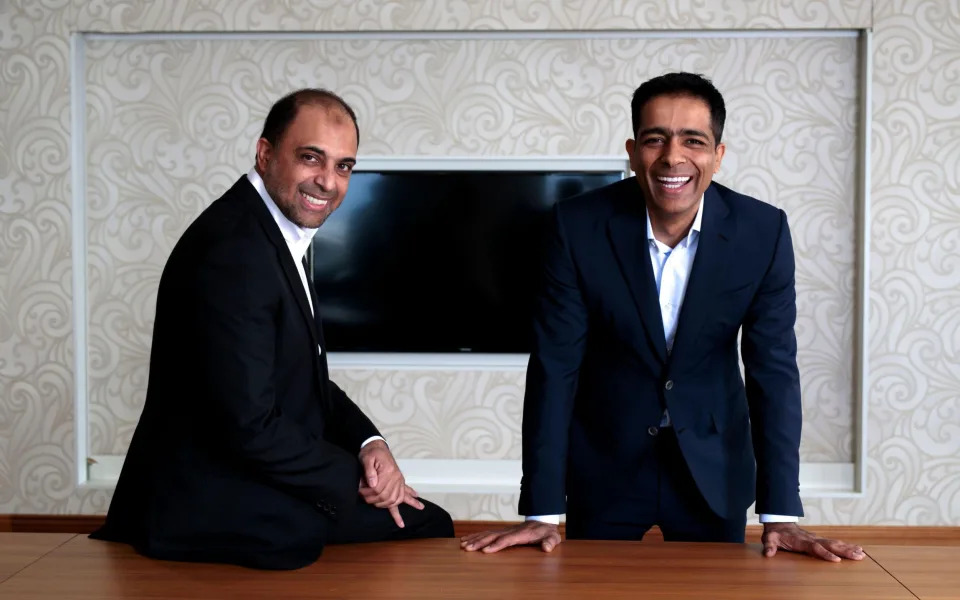Avinoam Patt, University of Connecticut
Liat Steir-Livny, Sapir Academic College
Thu, December 7, 2023

On Oct. 12, a sign in Tel Aviv says in Hebrew, 'No more words,' near candles lit both in memory of those killed in the Hamas massacres and for the hostages taken to the Gaza Strip. Amir Levy/Getty Images
Many observers have referred to the massacre of Israelis by Hamas on Oct. 7, 2023, as the deadliest attack against the Jewish people in a single day “since the Holocaust.”
As scholars who have spent decades studying the history of Israel’s relationship with the Holocaust, we have argued that the Holocaust should remain unique and not be compared with other atrocities. We have written against simplistic Holocaust analogies, like comparing mask and vaccine mandates during the COVID-19 pandemic to the Nazi persecution of the Jews, or the practice of labeling political opponents “Nazis.” Both seem to trivialize the memory of what is known as the Shoah, the Hebrew word for “catastrophe.”
But the Oct. 7 massacres perpetrated by Hamas changed our thinking.
Israeli identity and the Holocaust
Over the past 75 years, the collective memory of the Shoah has assumed a central place in Israeli national identity. The memory of the Holocaust has increasingly become the prism through which Israelis understand both their past and their present relationships with the Arab and Muslim world.
Israelis saw the Holocaust’s threat of annihilation echoed in many situations. In 1967, there was the waiting period before the Six-Day War, when the Egyptian leader Gamal Abdel Nasser threatened to “wipe Israel off the map.” It was there in the trauma of the Yom Kippur War in 1973 and the unexpected, simultaneous attacks by Egypt and Syria. When Israel destroyed the Iraqi nuclear reactor in 1981, Prime Minister Menachem Begin justified it with the explanation that “there won’t be another Holocaust in history.”
This association has only strengthened in the past 40 years with the 1982 Lebanon war, two Palestinian uprisings, known as intifadas, and with the present threat posed by a nuclear Iran.
All these events evoke the memory of the Holocaust and are understood within the collective memory of threats of annihilation. This phenomenon represents, for many Israelis, an inability to separate their current situation from the vulnerability of the diaspora Jewish past. And this conflation of past and present continues to play a central role in Israeli politics, foreign policy and public discourse.
The frequent comparisons between the Oct. 7 massacres and the Shoah are more, we believe, than just the default associations of a people submerged in Holocaust postmemory, which refers to inherited and imagined memories of subsequent generations who did not personally experience the trauma. In seeking to describe the depths of evil they witnessed on Oct. 7, Israelis were making more than just an emotional connection between the Holocaust and the Oct. 7 massacres.

A protester holds a placard during a demonstration on Oct. 9 in London, outside of the prime minister’s residence. Photo by Vuk Valcic/SOPA Images/LightRocket via Getty Images
To help explain the logic of that connection, specific and reasonable comparisons can be made to better understand Hamas’ traumatic and devastating massacre of Israelis. Below are a few of the many parallels:
Thu, December 7, 2023

On Oct. 12, a sign in Tel Aviv says in Hebrew, 'No more words,' near candles lit both in memory of those killed in the Hamas massacres and for the hostages taken to the Gaza Strip. Amir Levy/Getty Images
Many observers have referred to the massacre of Israelis by Hamas on Oct. 7, 2023, as the deadliest attack against the Jewish people in a single day “since the Holocaust.”
As scholars who have spent decades studying the history of Israel’s relationship with the Holocaust, we have argued that the Holocaust should remain unique and not be compared with other atrocities. We have written against simplistic Holocaust analogies, like comparing mask and vaccine mandates during the COVID-19 pandemic to the Nazi persecution of the Jews, or the practice of labeling political opponents “Nazis.” Both seem to trivialize the memory of what is known as the Shoah, the Hebrew word for “catastrophe.”
But the Oct. 7 massacres perpetrated by Hamas changed our thinking.
Israeli identity and the Holocaust
Over the past 75 years, the collective memory of the Shoah has assumed a central place in Israeli national identity. The memory of the Holocaust has increasingly become the prism through which Israelis understand both their past and their present relationships with the Arab and Muslim world.
Israelis saw the Holocaust’s threat of annihilation echoed in many situations. In 1967, there was the waiting period before the Six-Day War, when the Egyptian leader Gamal Abdel Nasser threatened to “wipe Israel off the map.” It was there in the trauma of the Yom Kippur War in 1973 and the unexpected, simultaneous attacks by Egypt and Syria. When Israel destroyed the Iraqi nuclear reactor in 1981, Prime Minister Menachem Begin justified it with the explanation that “there won’t be another Holocaust in history.”
This association has only strengthened in the past 40 years with the 1982 Lebanon war, two Palestinian uprisings, known as intifadas, and with the present threat posed by a nuclear Iran.
All these events evoke the memory of the Holocaust and are understood within the collective memory of threats of annihilation. This phenomenon represents, for many Israelis, an inability to separate their current situation from the vulnerability of the diaspora Jewish past. And this conflation of past and present continues to play a central role in Israeli politics, foreign policy and public discourse.
The frequent comparisons between the Oct. 7 massacres and the Shoah are more, we believe, than just the default associations of a people submerged in Holocaust postmemory, which refers to inherited and imagined memories of subsequent generations who did not personally experience the trauma. In seeking to describe the depths of evil they witnessed on Oct. 7, Israelis were making more than just an emotional connection between the Holocaust and the Oct. 7 massacres.

A protester holds a placard during a demonstration on Oct. 9 in London, outside of the prime minister’s residence. Photo by Vuk Valcic/SOPA Images/LightRocket via Getty Images
To help explain the logic of that connection, specific and reasonable comparisons can be made to better understand Hamas’ traumatic and devastating massacre of Israelis. Below are a few of the many parallels:
1. Ideology and identification
Just as the Nazis aimed to annihilate the Jews, Hamas and affiliated terrorist organizations share the same objective: the destruction of Jews. The 1988 Hamas charter refers to “Jews” and not “Israelis” when calling for the destruction of these people.
While the 2017 Hamas covenant states that Hamas does not seek war with the Jews, but instead “wages a struggle against the Zionists who occupy Palestine,” the slaughter of Jews – many of whom were peace activists – in October has proven otherwise.
The national struggle of Hamas is predicated upon the conquest of land and elimination of the Jews. Hamas officials have subsequently promised to repeat Oct. 7 again and again until Israel is annihilated.
2. Indoctrination
While the racial antisemitism of the Nazi regime differs from the antisemitism employed in the fundamentalist Islamic version of Hamas, antisemitism is a key part of the struggle for both ideologies. Indoctrination from an early age aimed at the dehumanization of the Jews is a key part of both how Nazis taught young German students during the Third Reich and in how Hamas educates children in Gaza.
3. Methods of killing and survival
The horrors of Oct. 7 echo the brutal tactics Nazis used during the Holocaust, including not only murder but cruel humiliation of the victims. The testimonies of Oct. 7 survivors reveal the torture of parents and children, sometimes in front of each other, including rape and sexual violence, mocking and lingering in the murder process as the terrorists relished the atrocities they committed.
When the Jews in the Warsaw ghetto realized that the end was near, they worked for months to prepare hiding places for themselves in their homes and created improvised bunkers, doing whatever they could to avoid capture and deportation. They did not imagine that the Nazis would come to eliminate the ghetto in a different way, entering the ghetto with flamethrowers and burning down one building after another. Some Jews were burned alive, while others fled outside and fell into the hands of the Nazis.
On Oct. 7, victims in the kibbutzim and communities near Gaza hid in fortified safe rooms designed to protect them from rocket attacks. Hamas terrorists went from house to house, burning one after the other so that inhabitants would be forced to flee from their protected shelters. Others were burned in their homes.
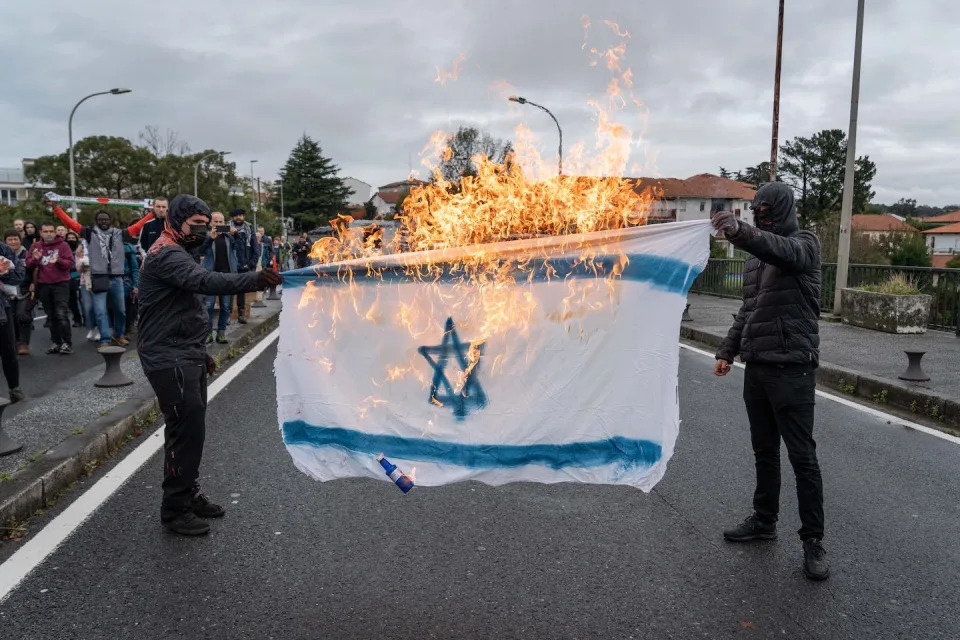
Two hooded demonstrators burn a flag of Israel on the bridge linking Spain and France on Nov. 11, 2023. Javi Julio/SOPA Images/LightRocket via Getty Images
4. Using Jews in the killing process
On Oct. 7, Hamas terrorists took a hostage from Nahal Oz, one of the kibbutzim in the south, and forced him to go from house to house to knock on doors and lure his neighbors outside. Afterward, they murdered him. Holocaust scholars have described such episodes from World War II in which Jews were forced to cooperate as “choiceless choices.”
5. Terminology
The word Shoah is used in the Bible to describe danger from neighboring nations, signifying distress, pain, torment, calamity and a “day of destruction.” While it later came to define the total Nazi extermination of Jews in the 1940s, multiple testimonies collected from survivors of the Oct. 7 massacres use the term once again today, echoing the biblical definition, to signal a day of desolation, darkness, destruction and gloom.
The words used to describe events are often loaded with emotional associations; the power and meaning of words that attempt to convey the depths of traumatic experiences cannot be discounted.
Not the same
There is a difference between pointing out similarities and creating shallow comparisons. We are aware of the tendency, especially in the political sphere, to resort to simplistic, symbolic and performative comparisons to the Holocaust – such as Israel’s ambassador to the United Nations, Gilad Erdan, donning a yellow star with the words “Never Again” on Oct. 31.
Oct. 7 is not the same as the Holocaust. Even so, we can use the study of the Holocaust to understand the traumatic and devastating encounters between Hamas terrorists and their victims on Oct. 7.
It might be a trivialization of the Holocaust to simply label Hamas as the “new Nazis,” but our analysis reveals that recognizing their eliminationist antisemitism means there can be no return to the pre-Oct. 7 status quo, when Israel’s policy was to accommodate Hamas’ control of the Gaza strip.
Despite the natural tendency to turn away from the most shocking and the most horrific manifestations of human evil, there are times when gazes must not be averted, when horror must be confronted in order to understand the motivations of the perpetrators and the responses of the victims and the survivors.
In this case, at what point do we ignore analogies that seem deliberate and intentional? As Holocaust scholars, we recognize why Israelis are stuck – and struck – by the traumatic nature of Oct. 7.
This article is republished from The Conversation, a nonprofit, independent news organization bringing you facts and analysis to help you make sense of our complex world.
It was written by: Avinoam Patt, University of Connecticut and Liat Steir-Livny, Sapir Academic College.
Read more:
Deadliest day for Jews since the Holocaust spurs a crisis of confidence in the idea of Israel – and its possible renewal
Jewish response to Hamas war criticism comes from deep sense of trauma, active grief and fea
How new reports reveal Israeli intelligence underestimated Hamas and other key weaknesses
John Joseph Chin, Carnegie Mellon University
Haleigh Bartos, Carnegie Mellon University
Thu, December 7, 2023
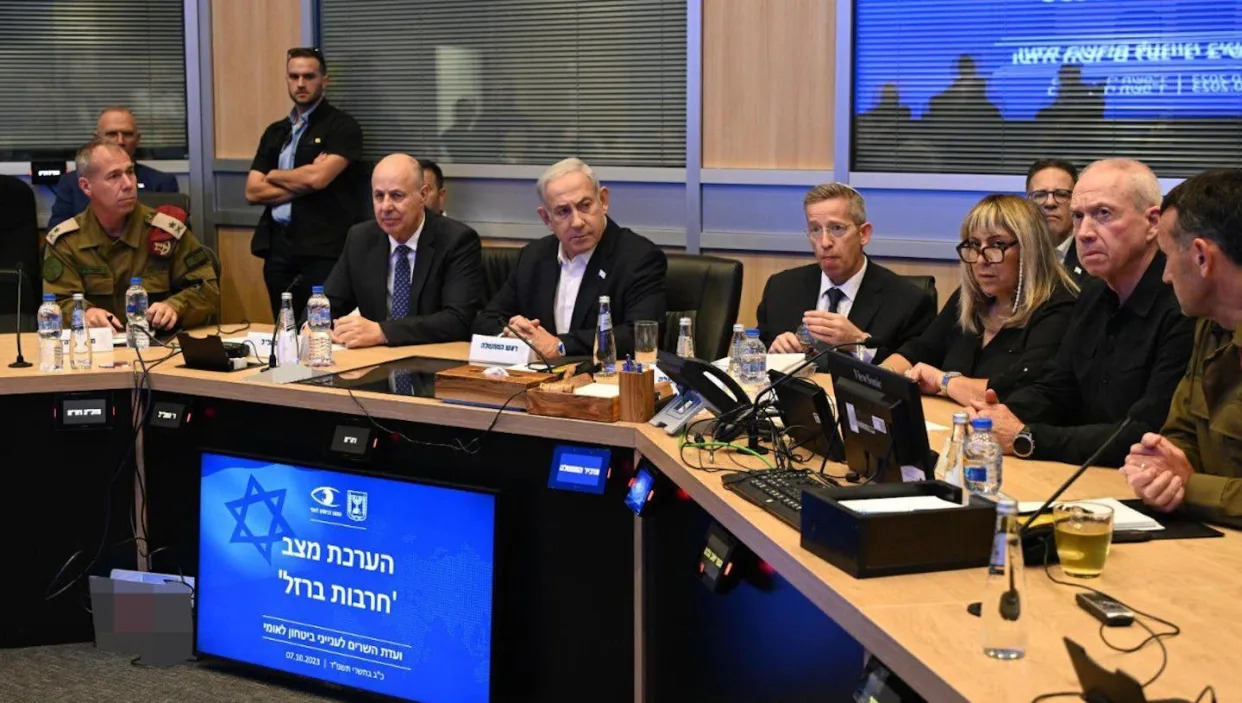
Israeli Prime Minister Benjamin Netanyahu, center, meets with his security cabinet on Oct. 7, 2023, the day of the Hamas attack. Haim Zach (GPO) / Handout/Anadolu Agency via Getty Images
After the surprise Hamas terrorist attack on Israel from the Gaza Strip on Oct. 7, 2023, many observers were puzzled about how Israel could have been caught completely off-guard.
We were among those puzzled, and proposed three possible reasons:
Israeli leaders may have underestimated Hamas’ capabilities and misunderstood its intentions.
Israeli intelligence may have been tricked by Hamas’ secrecy, missing signs that it was planning and training.
Israeli intelligence leaders may have been so wedded to their prior conclusion that Hamas was not a major threat that they dismissed mounting evidence that it was preparing for war.
New revelations from recent media coverage have shed additional light on what happened, which mostly confirm the role of faulty threat assessments, Hamas’ improved operational security, and confirmation bias.
An official assessment
On Oct. 29, The New York Times reported that since May 2021, Israel’s military intelligence leaders and National Security Council had officially assessed that “Hamas had no interest in launching an attack from Gaza that might invite a devastating response from Israel.”
As a result, Israeli Prime Minister Benjamin Netanyahu and security leaders diverted attention and resources away from Hamas and toward what they saw as more existential threats: Iran and Hezbollah. For instance, in 2021, the Israeli military cut personnel and funding for Unit 8200, a key military surveillance unit watching Gaza. In 2022, the unit stopped listening in on Hamas militants’ radio communications, though it apparently gathered other intelligence.
The U.S. made a similar shift, focusing on the Islamic State group and other militants, leaving intelligence gathering on Hamas to Israel.
Revealing surveillance
Within days of Oct. 7, Egypt revealed that it had shared with Israel high-level warnings of impending Hamas violence – “something big.”
A Guardian report in early November revealed that Hamas leaders who had planned the attack took special measures to avoid being detected by Israeli intelligence, including passing orders only by word of mouth, rather than by radio or internet communication. But Hamas’ planning did not totally escape detection.
The Times of Israel reported in late October that Israeli troops of the Combat Intelligence Corps surveilling the Israel-Gaza border months before Oct. 7 saw Hamas militants digging holes, placing explosives, training frequently and even practicing blowing up a mock fence. Their warnings were ignored. The Financial Times reported in early November that Israeli security leaders had also ignored specific alerts of Hamas training exercises from civilian volunteers in southern Israel who eavesdropped on Hamas communications.
The Financial Times also reported that weeks before the Hamas attack, Israeli border guards sent a classified warning to the top military intelligence officer in the southern command. They had detected a high-ranking Hamas military commander overseeing rehearsals of hostage-taking and warned that Hamas was training to imminently “blow up border posts at several locations, enter Israeli territory and take over kibbutzim.” The officer who received the message dismissed it as an “imaginary scenario.” Other leaders considered the warning unremarkable.
A detailed plan
On Nov. 30, The New York Times reported that Israeli intelligence obtained a detailed Hamas plan of attack more than a year before Oct. 7. The plan ran to 40 pages and included specifics that actually were part of the attack, including an opening rocket barrage, drones knocking out security cameras and automated weapons at the border, and gunmen crossing into Israel in paragliders as well as on foot and by motorcycle.
The newspaper also reported that in July 2023, a Unit 8200 analyst observed Hamas training activities that lined up with the Hamas plan, which was code-named “Jericho Wall” by Israeli officials. The analyst determined that Hamas was preparing an attack designed to provoke a war with Israel. Superior officers dismissed her assessment, saying the “Jericho Wall” plan was only aspirational primarily because they thought Hamas lacked the capacity to carry it out.
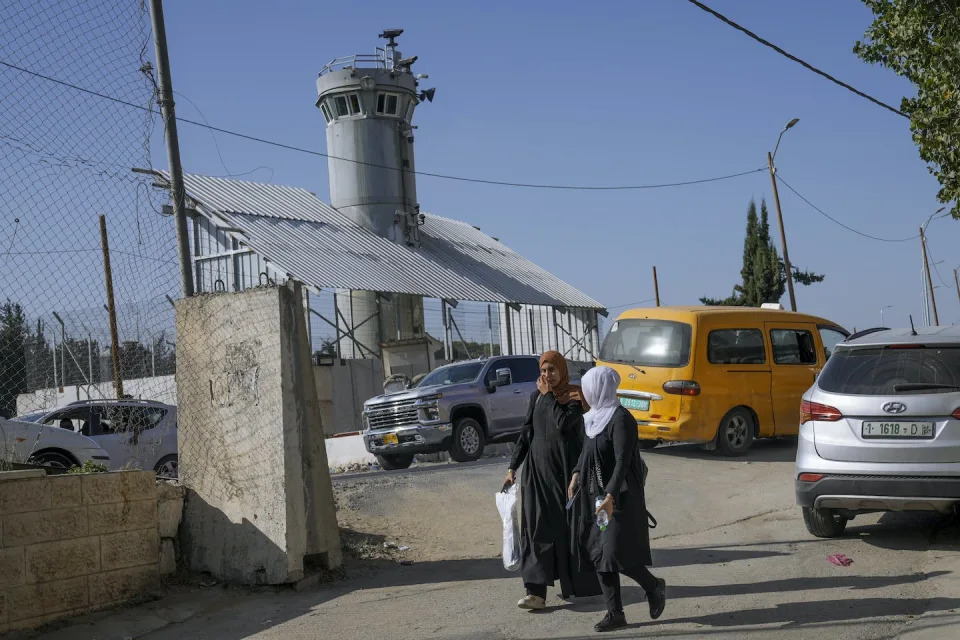
Israel’s defenses include stations like this guard tower in the West Bank, with robotic weapons that can fire tear gas, stun grenades and sponge-tipped bullets, using artificial intelligence to track targets. AP Photo/Mahmoud Illean
A reflection on the Israeli intelligence community
These recent reports make clear that Israeli officials had enough intelligence to step up security. The fact that they did not suggests they may have dismissed all that evidence in favor of other information they had, which suggested Hamas was not interested in or capable of going to war with Israel.
But that may not have been the only problem. Recent studies point to increasing fissures in civil-military relations in Israel. For example, populist right-wing Israeli politicians in recent years have viewed senior intelligence officials with skepticism as potential leftist rivals, which could have led Netanyahu’s Likud government to be hostile to alternative viewpoints and various intelligence warnings on Hamas.
Although we cannot observe the extent of politicization among the senior Israeli intelligence ranks, the behavior of intelligence leaders who dismissed warnings prior to Oct. 7 is consistent with groupthink, a phenomenon that experts say may occur when social pressure, a leader’s influential position or self-censorship leads groups to express homogeneous views and make uniform – and usually poorer – decisions.
The fact that superiors ignored warnings from the Unit 8200 analyst and the Border Defense Corps is consistent with the idea that groupthink about Hamas’ capabilities and intentions led to confirmation bias dismissing Hamas as an imminent threat.
Some of the ignored intelligence analysts were young women, who have said they believe sexism could have been a reason male superiors ignored their warnings.
Another form of prejudice may also have been at play. Israel has focused intensely on its technological advantages over its enemies, assigning large numbers of personnel to electronic and cyber warfare units. Perhaps technological optimism, faith in what the Financial Times described as “aerial drones that eavesdrop on Gaza and the sensor-equipped fence that surrounds the strip,” won out. Maybe a reliance on technology led to a false sense of security, and even the dismissal of other forms of intelligence that, it turned out, had uncovered Hamas’ real plans.
A turn toward the future
In the wake of the Hamas attacks, Israel’s security apparatus will need to investigate these weaknesses further and undertake reforms. So far, it remains unclear how many people, and at what levels of the Israeli government, received the various warnings in advance of Oct. 7. Therefore, it’s not yet clear what specific changes in Israel might prevent a similar failure in the future.
This article is republished from The Conversation, a nonprofit, independent news organization bringing you facts and analysis to help you make sense of our complex world.
It was written by: John Joseph Chin, Carnegie Mellon University and Haleigh Bartos, Carnegie Mellon University.
Read more:
Hamas assault echoes 1973 Arab-Israeli war – a shock attack and questions of political, intelligence culpability
Reflections on hope during unprecedented violence in the Israel-Hamas war
'Concerned and afraid': Jews celebrate Hanukkah amid rise in hate
KIARA ALFONSECA
GMA
Thu, December 7, 2023
Thu, December 7, 2023
Hanukkah has taken on a new meaning this year for many in the Jewish community after Israel was attacked by terrorist group Hamas on Oct. 7.
More than 1,200 people in Israel were killed, and 6,900 others injured, according to Israeli officials. An estimated 236 people are said to have been taken hostage in the attack.
Israel has retaliated in a siege on Gaza, killing more than 15,900 people in Gaza and injuring 42,000 more, according to Gaza's Hamas-run Ministry of Health and the Hamas government media office.
Hanukkah, which translates to "dedication" and begins on Dec. 7 this year, is about a recommitment to the ideals of Judaism, according to New York City rabbi Diana Fersko. It honors the Jewish fighters who fought against Syrian armies to defend their religious beliefs in 164 BCE.
"Hanukkah is a story of survival against great odds," said Fersko, author of "We Need to Talk About Antisemitism." "It's about the Jewish people persevering even when our detractors seem overwhelming.
This year, Hanukkah will be celebrated amid a backdrop of growing tensions in the U.S. related to the Israel-Hamas conflict.
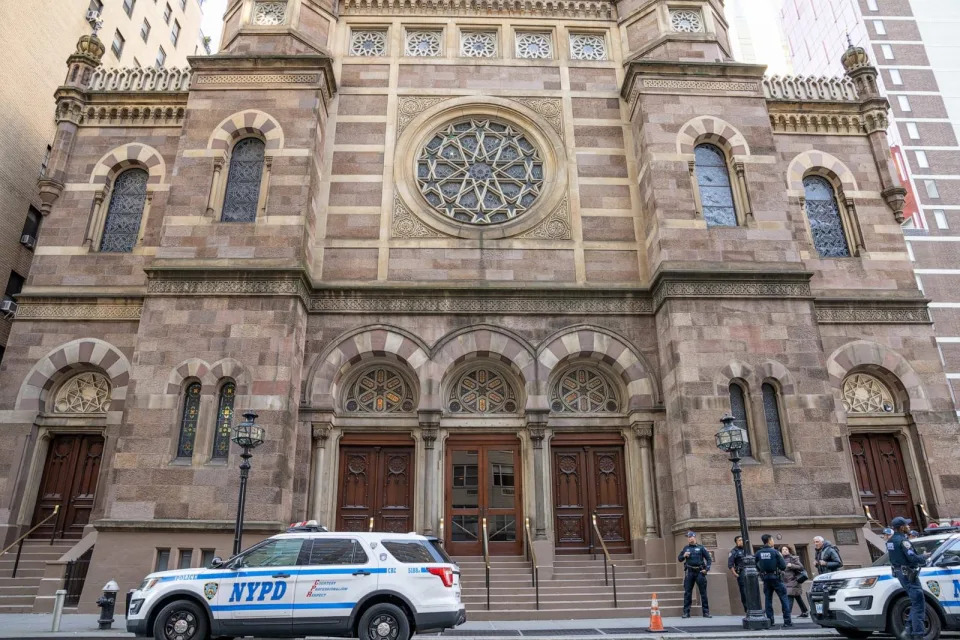
PHOTO: NYPD Officers respond to a bomb threat after a man called and stated he placed two backpacks filled with pipe bombs inside of the occupied Central Synagogue, Nov. 11, 2023, in New York. (Theodore Parisienne/NY Daily News via Getty Images)
Communities whose identities are tied to the conflict overseas -- Jews and Muslims, Israelis and Arabs -- have become targets of hate here in the United States.
Federal and local authorities are sounding the alarm about a rise in antisemitism and Islamophobia.
Jewish leaders say the holiday's history is an apt reminder of the ongoing effort to combat antisemitism and stand proud of their Jewish identity.
MORE: Harvard, NYC schools added to DOE probe on antisemitism, Islamophobia
While members of the community may feel cautious about putting menorahs in their windows or publicly celebrating this Hanukkah, Jewish Federations of North America President Eric Fingerhut says that embracing their Jewish heritage is "an act of strength and determination" in the face of hate.
"Our hope is that the Hanukkah lights will do for us what they've done in ancient times, that they will bring some light into this darkness and point us towards an end to this period and towards a brighter period," said Fingerhut. JFNA is an umbrella group of Jewish communal organizations around the United States.
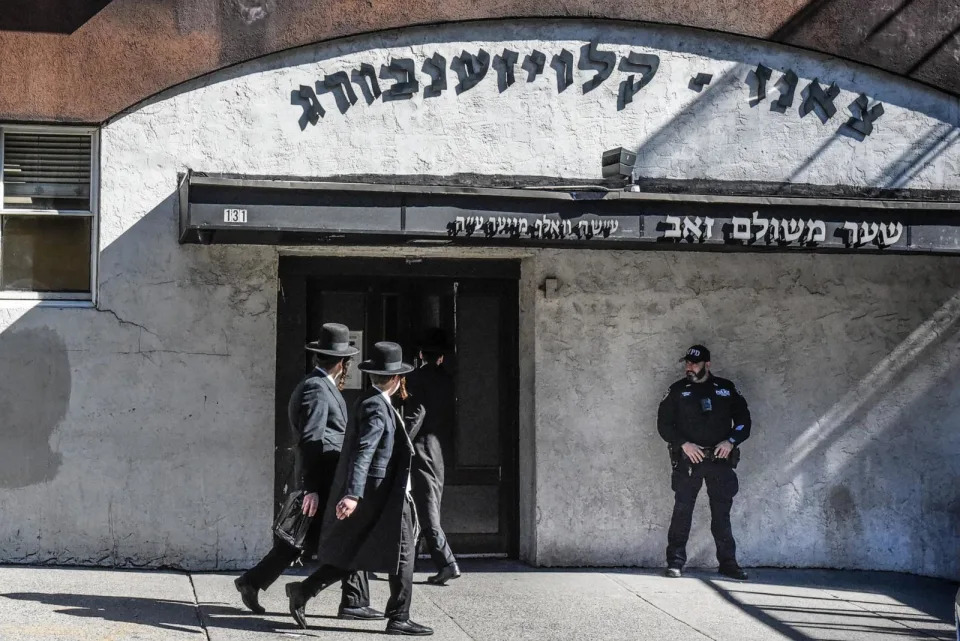
PHOTO: A member of the New York Police Department patrols in front of a synagogue, Oct. 13, 2023, in New York. (Stephanie Keith/Getty Images)
The threat of hate
The Jewish community has seen an increase in vandalism, threats, violence and other crimes across the country.
The growing number of incidents come with a backdrop of the longstanding warning from officials in recent years about a rise in antisemitic sentiment in the mainstream.
The Department of Homeland Security earlier urged Jewish leaders to be cautious of individuals who have been "incited to violence by an ideology of hate."
Authorities have not identified any specific plots linked to Hanukkah, but have also warned of "renewed calls for attacks against Jewish individuals and targets" by foreign terror groups and domestic violent extremists, according to a recent threat assessment obtained by ABC News.
Jewish organizations and institutions say they will heed these warnings, but that security precautions have long been in place to protect their communities. Antisemitism has been a constant threat that's been appearing to grow in the mainstream in recent years, according to federal officials.
The ongoing conflict has only led groups to further escalate their security needs.
Experts at the Jewish security organization Secure Community Network said in a Dec. 5 hearing that people are "concerned and afraid."
In an online briefing, they urged community leaders to coordinate with local law enforcement for large events and public gatherings, as well as create plans in anticipation of any potential problems that may arise.
This can look like limiting access to events through ticketing, conducting pre-event surveys of the location regarding best exit procedures, radio dispatches with private security guards, and more.
MORE: The Israel-Hamas war has college campuses on edge. How some are tackling the issue.
Tough conversations this holiday season
As families gather to celebrate, conversations about the conflict, Israel's response to the Hamas attack, and its impact on antisemitism in the U.S. may arise. But community leaders say Jewish institutions are no stranger to difficult conversations.
Some groups like the Jewish Federations of North America say they stand with Israel's actions "to restore the safety and security of its boundaries, of its borders" following the attack, Fingerhut said.
"Of course, there are disagreements as there always are, but I've actually never seen the Jewish community more united," Fingerhut said, pointing to the March for Israel that he says garnered almost 300,000 attendees.
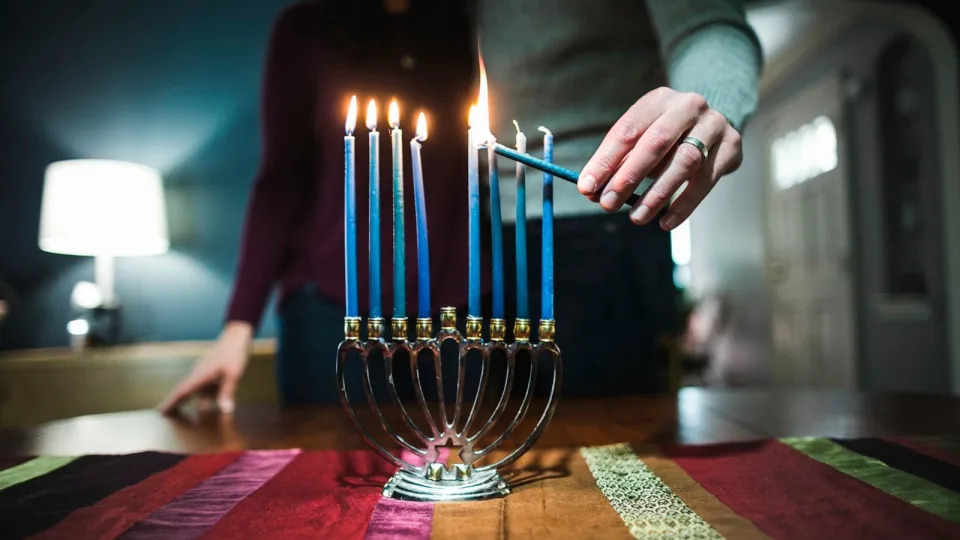
PHOTO: In an undated stock photo, a couple is seen lighting a menorah. (STOCK PHOTO/Getty Images)
Others, like Jewish Voice for Peace and IfNotNow, are calling for a permanent ceasefire between Israel and Palestinian territories and an end to what they say are oppressive Israeli policies against Palestinian people that have caused a humanitarian crisis.
Stefanie Fox, executive director of the progressive anti-Zionist group Jewish Voice for Peace, said that when she lights her candles on the menorah with her family, she too is aware of the increase in violence against the many groups connected to the conflict.
"As I do that with my son, I'm going to be talking about how we are both proudly displaying our Jewish heritage and also proudly displaying our commitment to fighting for a world where everybody is safe in their home," said Fox.
Community leaders say that communities have been having many tough conversations about the conflict and the aftermath since it began.
Fox urges community members to connect with others across lines of disagreements and differences, and to "start from a place of shared values and see if you can build toward a vision of a very different future than the bloodshed we're seeing today."
Fersko calls synagogues "a place of urgent moral conversation," a reputation expected to hold up amid Hanukkah celebrations.
"I think the Jewish community is actually very strong in having open dialogue with each other and being there for each other and strategizing together," Fersko said.
She continued, "There is this sense that we're celebrating Hanukkah with a spirit of defiance."
ABC News' Aaron Katersky and Josh Margolin contributed to this report.
'Concerned and afraid': Jews celebrate Hanukkah amid rise in hate originally appeared on abcnews.go.com
